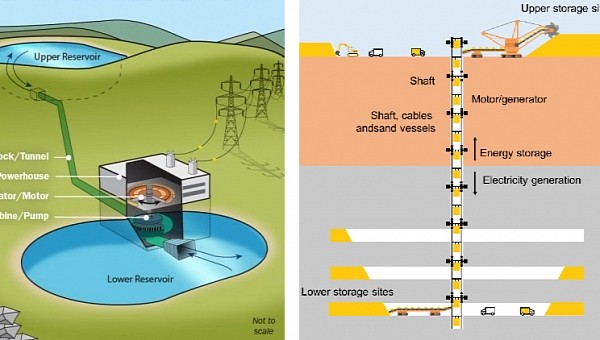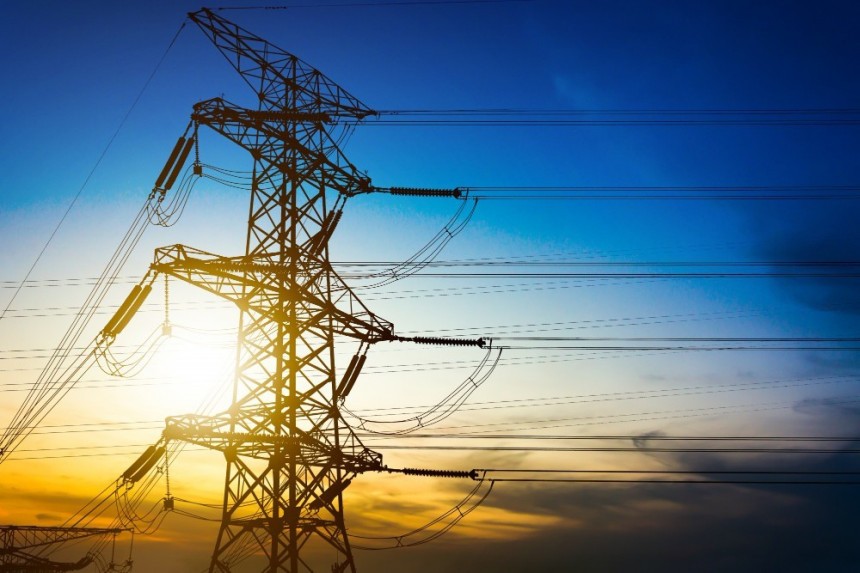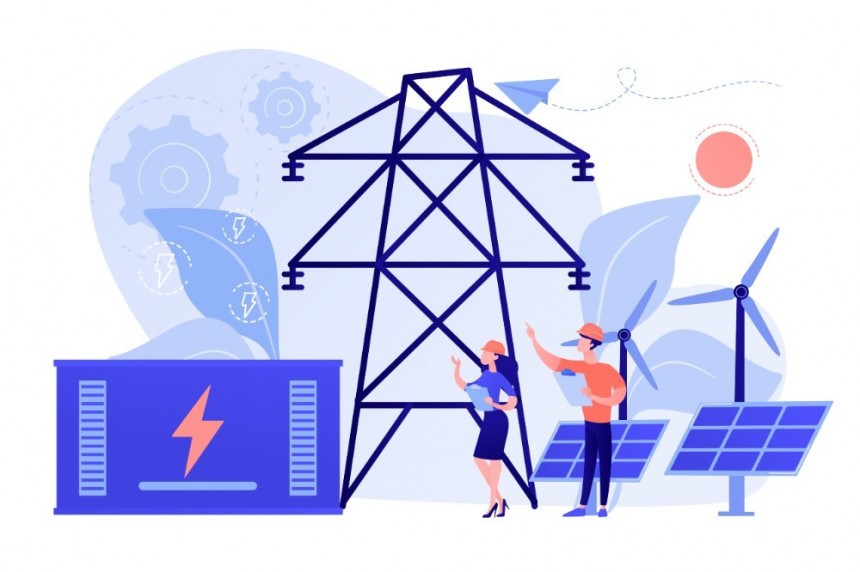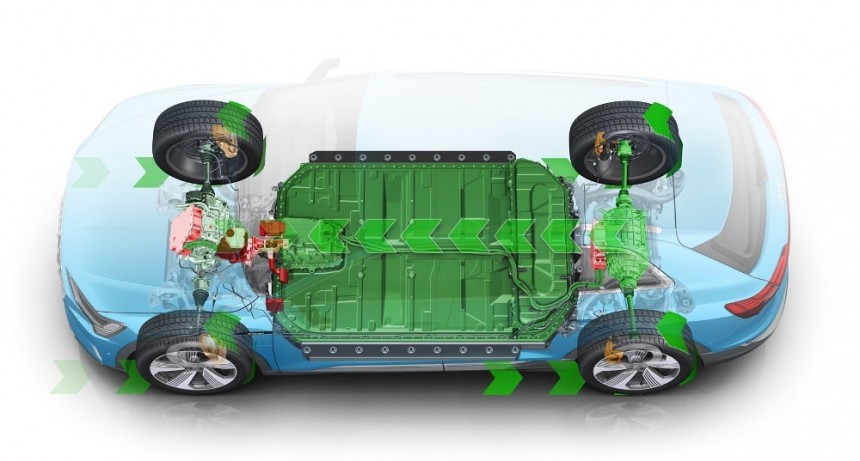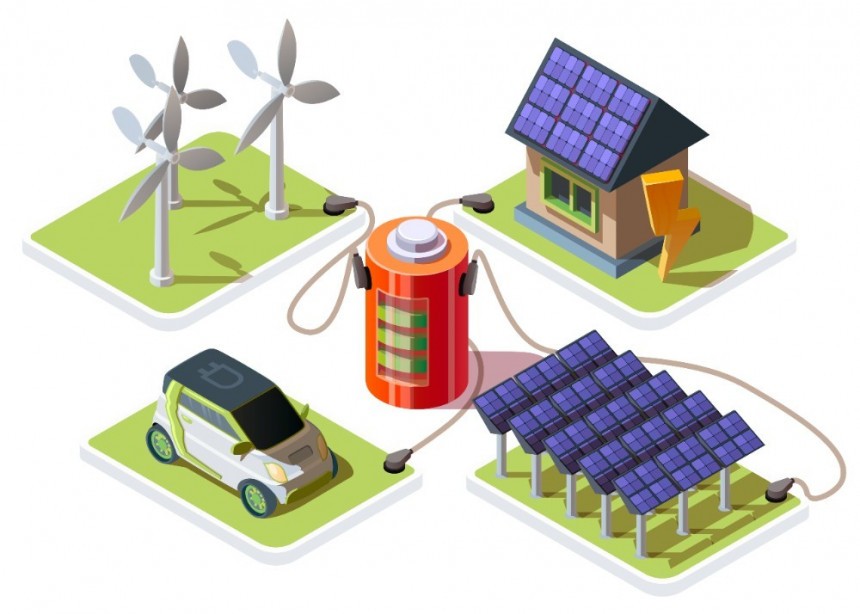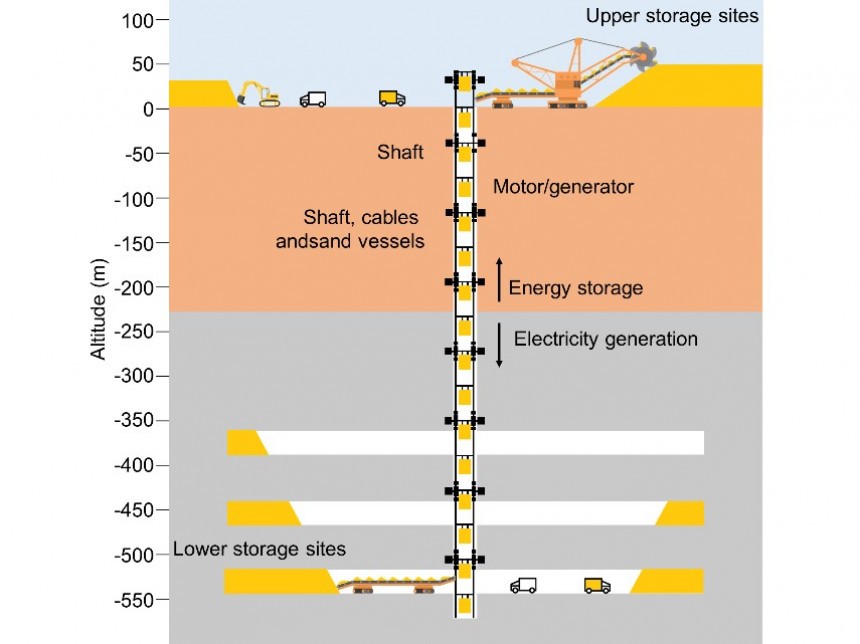Your gasoline car’s tank and your electric car’s battery are energy storage devices. The hydropower lake and the mountains of coal waiting to be burned in a power plant are sort of energy storage forms. Unfortunately, the electrical grid’s inception didn’t consider any kind of intermittent renewable sources of energy. Large-scale storing of this clean energy for future use is now the most important race for survival.
At some point in distant history, human beings tamed fire. They first started to burn wood and after many millennials, they started digging for fossil fuels to burn. Burning this stuff was good for creating energy and electricity – and humanity’s development skyrocketed.
But at some point in relatively recent history, human beings realized that burning all this stuff also leads to anthropogenic CO2 emissions and other pollutants. Their effects are global warming, climate change, and an existential threat to humankind. We had to think of a zero-emissions solution for producing electricity.
The problem – the huge mammoth in the room – is the electrical grid was designed having three continuous phases in mind: 1) producing energy (from stuff that can be easily stored), 2) transporting the energy to consumers, and 3) consumption of the energy by a myriad of electrical devices.
It's a never-ending machine, where drops and peaks in energy demand usually result in heavy losses of energy. Or blackouts. Now imagine replacing the fossil fuel sources in this gearing with those intermittent renewable sources producing too much energy when the grid load is low, and too little or none of it when the grid load is high. It’s simply an apocalypse.
I wish we had a Doctor Strange or Professor Xavier to magically transform our grid overnight. Instead, the only logical solution is adding a fourth phase: storing the intermittent renewable energy for later use. Easier said than done.
Water, coal, oil, and gas are themselves forms of energy storage – energy that is converted into electricity in all sorts of power plants. But electricity is not storable in a simple container, like dams for water, deposits for coal, or tanks for oil and gas.
In order for the electricity to be stored, it needs a very special and complex container – a battery of some sort, which is a very new technology and almost in its infancy compared to fossil fuel usage.
Or maybe electricity could be turned back into energy, and we could store that energy somehow, and then transform that energy into electricity when we need it.
Enough with the theory, let’s do a transforming-energy experiment. Pick something in your hand and lift it to the height of your head. I hope it’s not your smartphone because now you have to let it go. Oops, I hope you had a good case on that phone or you really hated it.
Jokes aside, when you lifted the object, you consumed a quantity of energy for this motion. But you also “charged” that object with some energy – potential energy. When you dropped the object, it was falling because of gravitational force. And the object’s potential energy could be turned into electricity if there was some device to oppose that gravitational force.
I know, it’s physics, you probably hated it in school. Well, then, think about braking a car: when you push the pedal, the energy of braking is lost as heat in the case of an ICE car, or it is transformed into electricity and stored back into the battery in the case of a hybrid or EV car.
Having the EV example in mind, when dropping an object from a high point, its “stored” energy could be transformed into electricity by a device that can brake its falling. In short, this is the simple principle of any form of gravitational energy storage that is not battery-based.
In a few decades, we’ll have hundreds of billions of devices and gadgets powered by batteries, a billion electric vehicles using batteries, billions of home and office energy storage devices, and millions of large-scale energy storage projects.
These large-scale energy storage projects are of crucial importance for the grid. For now, lithium-ion battery-based solutions are capable to sustain maximum power output for a few hours or even for a couple of days. But they are more of a backup solution, at best.
If we are to replace fossil fuel sources in the grid with renewables one, we must think big. No, not big, much bigger than you can imagine. We need the so-called long-duration energy storage projects, which are capable to turn giga-watts of power into energy, “storing” it for days or weeks, and then transforming it into electricity in a continuous manner.
How much is 1 GW of power? According to the U.S. Office of Energy Efficiency & Renewable Energy, you need more than three million common photovoltaic panels or more than 300 utility-scale 3MW wind turbines to create this quantity of energy. And it could power 100 million LEDs or almost 10,000 small-battery EVs like the Nissan Leaf.
What these numbers are telling us is that we need long-duration energy projects rivaling in size the Pyramids of Egypt. Yes, that big!
BNEF suggests that about 60% of the projects will be to provide energy shifting, which is advancing or delaying the time of electricity dispatch. Energy storage located in homes and businesses will account for 25% - this leads to another debate on the microgrids dilemma.
Today, lithium-ion battery energy storage systems account for the majority of installations. But by 2030, many non-battery technologies will be deployed, and lithium-ion-based ones could lose their dominance. It seems that most funds go toward compressed air and thermal energy storage.
Interestingly, BNEF states that the forecast excludes pumped hydro storage, which is the most dominant form of energy storage on the electric grid today. It is expected to increase by 50% by 2030, to about 240 GW – which is half of BNEF predictions for all the other solutions!
Pumped hydro storage is the best example of good use of gravitational force. It consists of two water reservoirs, placed at different elevations. When the grid needs electricity, the water from the upper reservoir is allowed to move down, powering a turbine and producing electricity. When the grid load is low, cheap electricity is used to pump water from the lower reservoir back to the upper one.
Such a “battery” sounds wonderful, but there is a caveat: climate change is putting energy security at risk globally because droughts are affecting water resources. Approximately 26% of existing hydropower dams and 23% of projected dams are within river basins that currently have a medium to very high risk of water scarcity.
Pumped hydro storage is also at risk, so it’s only natural to search for other ways of putting the force of gravity to good use. How about the now-defunct mining sites, which likely number in the millions globally?
Because mines already exist, and also most of the mining equipment needed, while sand is simply so cheap.
Researchers estimated that investment costs are about $1-10/kWh, much lower compared to $2-50/kWh for pumped hydro storage. On the other hand, the installed capacity cost is estimated at $2,000-4,000/kW, higher than the $400-1000/kW for pumped hydro storage.
The main advantage is very long storage (depending on how deep the mine is) and essentially limitless capacity. Besides, sand is not affected by climate change, as water is. And it is enabling ultra-long time energy storage ranging from weeks to several years.
How does it work? The main components are the shaft, motor/generator, upper and lower storage sites, and mining equipment. It generates electricity by lowering sand into the mine and converting the potential energy of the sand into electricity via regenerative braking. Then it uses cheap electricity to lift the sand from the mine to an upper reservoir using electric motors to store energy.
Yes, it’s that simple. And in the process, abandoned mines can be revived, which is an unexpected positive side effect for many parts of the world – researchers found out that the most mines suitable for this solution are concentrated in China, India, Russia, and the U.S.
However, there is the question of profitability, as this technology is estimated to have a global potential of 7 to 70 TWh. The best-case scenario is still four times less than hydro-pumped storage, so the future of this solution is mainly a question of interest from investors.
There are other grid-scale gravity energy storage solutions out there, but all of them still have to pass the proof-of-concept stage. The main lesson from this is that the grid can be decarbonized. I mean, it has to be, because two-thirds of GHG emissions in the U.S. are due to the way we produce electricity.
We need clean electricity for the “Electrify Everything” really to make sense. The long-duration energy storage ideas based on gravity are a very important part of the solution in order to accelerate the deployment of renewables. Let’s only hope it’s not too little, too late.
But at some point in relatively recent history, human beings realized that burning all this stuff also leads to anthropogenic CO2 emissions and other pollutants. Their effects are global warming, climate change, and an existential threat to humankind. We had to think of a zero-emissions solution for producing electricity.
If we could magically switch to renewables…
In an almost desperate desire to minimize damage, human beings turned their eyes and knowledge, and resources toward near-zero-emissions means of creating energy, like solar, wind, hydro, and so on. The goal is to replace fossil fuel energy with clean energy, as close to zero emissions as we can.The problem – the huge mammoth in the room – is the electrical grid was designed having three continuous phases in mind: 1) producing energy (from stuff that can be easily stored), 2) transporting the energy to consumers, and 3) consumption of the energy by a myriad of electrical devices.
I wish we had a Doctor Strange or Professor Xavier to magically transform our grid overnight. Instead, the only logical solution is adding a fourth phase: storing the intermittent renewable energy for later use. Easier said than done.
Water, coal, oil, and gas are themselves forms of energy storage – energy that is converted into electricity in all sorts of power plants. But electricity is not storable in a simple container, like dams for water, deposits for coal, or tanks for oil and gas.
In order for the electricity to be stored, it needs a very special and complex container – a battery of some sort, which is a very new technology and almost in its infancy compared to fossil fuel usage.
So how can we turn electricity into energy for later use?
By simply using the force that hit Newton’s head – oh, wait, that was an apple… Never mind, it’s the gravitational force, that pulls objects with mass toward each other. Because Earth is huge and all of us are tiny, the third rock from the sun is keeping us on the ground thanks to the force of gravity (otherwise we’d all float).Enough with the theory, let’s do a transforming-energy experiment. Pick something in your hand and lift it to the height of your head. I hope it’s not your smartphone because now you have to let it go. Oops, I hope you had a good case on that phone or you really hated it.
Jokes aside, when you lifted the object, you consumed a quantity of energy for this motion. But you also “charged” that object with some energy – potential energy. When you dropped the object, it was falling because of gravitational force. And the object’s potential energy could be turned into electricity if there was some device to oppose that gravitational force.
I know, it’s physics, you probably hated it in school. Well, then, think about braking a car: when you push the pedal, the energy of braking is lost as heat in the case of an ICE car, or it is transformed into electricity and stored back into the battery in the case of a hybrid or EV car.
The batteries are good. But they are simply not enough
Batteries, especially lithium-ion ones, are the safest bet for the near and medium term in the case of cars, electronics, and energy storage. Well, this is not entirely true because we need tremendous quantities of resources to fulfill every need.In a few decades, we’ll have hundreds of billions of devices and gadgets powered by batteries, a billion electric vehicles using batteries, billions of home and office energy storage devices, and millions of large-scale energy storage projects.
These large-scale energy storage projects are of crucial importance for the grid. For now, lithium-ion battery-based solutions are capable to sustain maximum power output for a few hours or even for a couple of days. But they are more of a backup solution, at best.
How much is 1 GW of power? According to the U.S. Office of Energy Efficiency & Renewable Energy, you need more than three million common photovoltaic panels or more than 300 utility-scale 3MW wind turbines to create this quantity of energy. And it could power 100 million LEDs or almost 10,000 small-battery EVs like the Nissan Leaf.
What these numbers are telling us is that we need long-duration energy projects rivaling in size the Pyramids of Egypt. Yes, that big!
Think bigger. Much bigger!
Research company BloombergNEF forecasts that the global energy storage market will grow 15-fold by 2030 to 411 GW / 1194 GWh. This is compared to the 2021 level of only 27 GW / 56 GWh worldwide.BNEF suggests that about 60% of the projects will be to provide energy shifting, which is advancing or delaying the time of electricity dispatch. Energy storage located in homes and businesses will account for 25% - this leads to another debate on the microgrids dilemma.
Today, lithium-ion battery energy storage systems account for the majority of installations. But by 2030, many non-battery technologies will be deployed, and lithium-ion-based ones could lose their dominance. It seems that most funds go toward compressed air and thermal energy storage.
Interestingly, BNEF states that the forecast excludes pumped hydro storage, which is the most dominant form of energy storage on the electric grid today. It is expected to increase by 50% by 2030, to about 240 GW – which is half of BNEF predictions for all the other solutions!
Pumped hydro storage is the best example of good use of gravitational force. It consists of two water reservoirs, placed at different elevations. When the grid needs electricity, the water from the upper reservoir is allowed to move down, powering a turbine and producing electricity. When the grid load is low, cheap electricity is used to pump water from the lower reservoir back to the upper one.
Such a “battery” sounds wonderful, but there is a caveat: climate change is putting energy security at risk globally because droughts are affecting water resources. Approximately 26% of existing hydropower dams and 23% of projected dams are within river basins that currently have a medium to very high risk of water scarcity.
Pumped hydro storage is also at risk, so it’s only natural to search for other ways of putting the force of gravity to good use. How about the now-defunct mining sites, which likely number in the millions globally?
Underground Gravity Energy Storage - could this be it?
For now, this novel way to store energy is only on paper, in a study led by the International Institute for Applied Systems Analysis (IIASA). An international team of researchers proposed a vertically transporting sand system into abandoned mines.Because mines already exist, and also most of the mining equipment needed, while sand is simply so cheap.
Researchers estimated that investment costs are about $1-10/kWh, much lower compared to $2-50/kWh for pumped hydro storage. On the other hand, the installed capacity cost is estimated at $2,000-4,000/kW, higher than the $400-1000/kW for pumped hydro storage.
The main advantage is very long storage (depending on how deep the mine is) and essentially limitless capacity. Besides, sand is not affected by climate change, as water is. And it is enabling ultra-long time energy storage ranging from weeks to several years.
Yes, it’s that simple. And in the process, abandoned mines can be revived, which is an unexpected positive side effect for many parts of the world – researchers found out that the most mines suitable for this solution are concentrated in China, India, Russia, and the U.S.
However, there is the question of profitability, as this technology is estimated to have a global potential of 7 to 70 TWh. The best-case scenario is still four times less than hydro-pumped storage, so the future of this solution is mainly a question of interest from investors.
There are other grid-scale gravity energy storage solutions out there, but all of them still have to pass the proof-of-concept stage. The main lesson from this is that the grid can be decarbonized. I mean, it has to be, because two-thirds of GHG emissions in the U.S. are due to the way we produce electricity.
We need clean electricity for the “Electrify Everything” really to make sense. The long-duration energy storage ideas based on gravity are a very important part of the solution in order to accelerate the deployment of renewables. Let’s only hope it’s not too little, too late.
